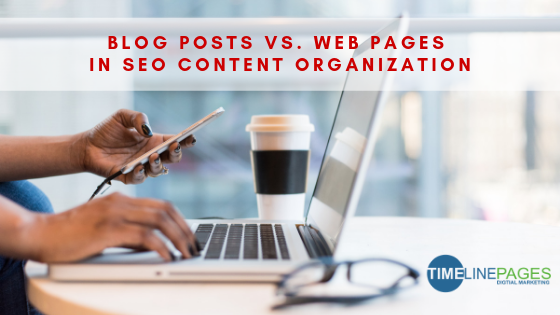Search engine optimization (SEO) can bring a lot of free traffic to your site from a specific target audience. Although many of the basic principles of SEO remain the same on different types of website pages, there are still differences in SEO best practices across page types.

Blog Posts Vs. Website Pages
A website page is the most common page you have on any commercial website: the about, career, the home page and feature pages are common examples. Product pages are also suitable for this category. In difference, a “blog post” is a single page that contains the textual content of an article style. Blog posts can contain videos and images that can affect rankings, but the text is still the main driver of SEO. Google and other engines do not evaluate website pages and blog posts completely differently. Conversely, how people use these pages and how to create differences in these pages can lead to differences in search rankings.
The main differences between website pages and blog posts include:
- People visit the website page to get information about the company. People come to blog posts to get information about the topic.
- Website pages are more likely to remain unchanged, while blog posts continue to be published
- Website pages are more likely than blog posts to get links because they are a natural place for the linker to send traffic
SEO Differences for Blog Posts and Website Pages
The content of the website page is simple, but it has a lot of links. The home page usually has the highest page permissions for the entire site. It is standard practice to use keywords on the page, including them in the URL and making them the page title. However, these pages are usually plain text (for good reason). This makes it difficult to rank semantically related terms because the content on the page does not have too many depth or breadth of topics. In contrast, blog posts rarely rank competitors.
Blog posts tend to receive fewer links than homepages and do not enjoy near-automatic traffic from brand searches. Long blog posts on narrow topics may be able to rank the main terms of the topic. However, most blog posts are not complicated. Content can only be ranked because of the web page footer.
It’s more common to see blog posts optimized for keywords, perhaps titled “Website footer best practices: everything you need to know” or “How to develop a content strategy,” but only provide 500 words of content insight into this topic. That kind of content won’t rank. It does not have enough value. However, if you don’t always target high-value, highly competitive head terms, you can still rank long tail searches. Long tail keywords tend to have lower search volume and weaker competitiveness. They can also help you rank related terms and terms that are not necessarily ranked. Not every search is a term that is searched for by many people. Many searches are highly specific phrases that do not display search volume in traditional search tools.
Digital Marketing Services
Timelinepages offers a free website evaluation and SEO audit. Contact us to schedule and appointment or call us at (248) 909-9428
